Reality shows are, without a doubt, omnipresent today. And, in the era of 24/7/365 content — voraciously consumed on traditional and digital platforms, on televisions and laptops and phones — the omnipresence of a cheaply-produced show that’s not beholden to SAG and the Director’s Guild is an obvious by-product.
But when it comes to Hip Hop’s history with reality shows, it’s been a more delicate dance. In some ways, Hollywood went Hip Hop — and in others, Hip Hop (and, to a lesser extent, Love) went Hollywood. Sometimes, it worked so well that it changed the television landscape — and sometimes, it failed so miserably that it was thankfully lost to the annals of time and space.
In honor of the latest entree into the Hip Hop reality show oeuvre — VH1’s Girls Crew, starring Mya, Lil’Kim, and Chilli of TLC — let’s take a look back at how rap and reality TV intersected over the years.
The Real World: Where It All Began
MTV’s The Real World — which first hit the airwaves in 1992 — is credited with the dawn of reality TV as we know it. Inspired by the 1970s PBS series An American Family, The Real World is now the longest-running television series in MTV history.
The inaugural season of the show took place in New York City, and featured the now-classic lineup of stars that included actor/fitness model Eric Nies, and journalist & activist Kevin Powell.
And while subsequent seasons made bona fide superstars out of WWE’s Mike “The Miz” Mizanin, actress Jacinda Barrett, and Basketball Wives‘ Tami Roman, Hip Hop got its first-ever reality star in the inaugural season of The Real World in the form of Heather Gardner. Gardner, who went by the moniker Heather B, was signed to Boogie Down Productions, and her two singles “All Glocks Down” and “If Headz Only Knew” garnered lots of radio play as a result of her appearance on the wildly popular show.
Today, Heather B is a sometime actress (who appeared in films like the Bruce Willis reboot of Death Wish) and a radio DJ who appears on air with Sway in the Morning on Shade 45. While there’s no question that Heather B is a talented rapper, and a successful DJ, there’s also no question that her profile would not be as high as it is today were it not for her appearance on The Real World.
Pimp My Ride: California Cars and West Coast Bars For The Culture
West Coast Customs is not just a car repair shop — it’s ground zero for a cultural revolution. Founded by Ryan Friedlinghaus and Quinton Dodson in 1994, West Coast Customs brought the so-called “hot rod” tradition of the 1960s into the new millennium. And, thanks to celebrity patrons like Sean “Diddy” Combs and Shaquille O’Neil, West Coast Customs drew the attention of MTV’s producers, who created a show called Pimp My Ride around custom car culture in general, and West Coast Customs in particular.
Hosted by rapper-turned-actor Xzibit (who is currently enjoying a successful stint on Empire), the concept behind Pimp My Ride — which debuted in 2004 — was simple: a resident of Southern California submits his or her janky car for inclusion consideration. Xzibit (and, from time to time, guest rappers like Chamillionaire) would then pay a visit to the poor soul, make snarky remarks about said janky car, and ship it off to West Coast Customs to get it “pimped out.”
While the cars were beautiful in an over-the-top type of way (which, really, was the point), it was later revealed that there were several other problems behind the scenes.
Some people complained that their cars would break down shortly after they were “pimped out,” which, to be fair, is not the fault of West Coast Customs, necessarily. The company makes clear that they specialize in car customizations, with the implication being that they aren’t mechanics, and any mechanical issues with the car that exist prior to customization are the responsibility of the owner to remediate.
According to The Hollywood Reporter, there were some situations that were strictly “for the cameras,” and if there was a concern about the safety of the customization — really, who thinks having a built-in bar in your car is road-safe? — West Coast Customs would immediately remove it.
But there were other behind-the-scenes issues that, according to The Huffington Post, were only revealed after the show’s run was complete, and would — in the current #MeToo climate — probably result in an immediate backlash today.
For example, one contestant said that the producers dumped bags of candy in his car and told him to “act like it was always there,” which the contestant took as a “fat-shaming” incident. Another contestant said that he was told to break up with his girlfriend after he got his “pimped-out” ride back because they wanted to position him as a “playa” (his word) on the show. Still another contestant said that his car was in the shop for more than 6 months, causing him to have to rent a car from a “shady company” in order to get around Los Angeles, and MTV refused to reimburse him for the cost.
Despite the false starts and hiccups on the show, all of the contestants said that they would do the show again, if given a chance to do so. And though Pimp My Ride only lasted for six seasons — during which it was the second-most popular series on MTV, behind The Real World — it inspired a variety of spin-offs and other similar shows, including CMT’s Trick My Truck, which was the “country music” version of the show that featured Ryan “Ryno” Templeton taking a bedazzler to the Ford F-150s and tractor trailers of America’s future Trump voters.
Hip Hop’s Surreal Entree Into Pop Reality TV
Save for Pimp My Ride — which positioned itself more as a “car show” than as a Hip Hop show — rap was notably absent from reality TV. And there was a reason for that: in the 1990s and even in the early aughts, rock’n’roll (and its grunge sub-genre) was the dominant musical genre on the radio. So, it was rather difficult for a Hip Hop star — aspiring or otherwise — to get his or her proverbial foot in the door in broadcast television.
But as rock’n’roll went on the decline at the turn of the century — and Hip Hop, in response, began its ascent — the public’s desire to see rappers on TV began to rise in kind.
So when 2003’s The Surreal Life debuted, it was an instant smash, and sent a flare up to the Hip Hop glitterati that there was yet another avenue available to pedal their wares (and, in many cases, to be reintroduced into the pop culture zeitgeist).
The first two seasons of The Surreal Life featured MC Hammer and Vanilla Ice, respectively, and worked wonders on giving a redemption arc to these two otherwise washed up rappers.
But the third season of The Surreal Life — which aired in 2004 — at first glance, garnered a big old “meh” from the viewing public. Charo? That was your mother’s favorite coochi-coochi. Dave Coulier? Didn’t Alanis Morrisette sing a song about doing filthy, filthy things to him in a movie theater, that Canadian tartlet? And what was Brigitte Nielson known for, at that time, besides being the ex-wife of one Sylvester Stallone? Nothing, that’s what.
No one knew, at that time, that we were witnessing history with the commencement of a love affair between “Gitte” and her “Foofy-Foofy,” castmate William Drayton, a/k/a Flavor Flav, a/k/a the hype man to Chuck D’s straight man in the seminal rap group, Public Enemy.
Inadvertently or not, this burgeoning romance had a butterfly effect on reality television in general, and Hip Hop’s role in reality television in particular, and nothing would ever be the same again.
Flavor of Love and For The Love of Ray J
Gitte and Foofy-Foofy went on to chronicle their unconventional romance in 2005’s Strange Love, a VH1 show that aired for only one season before Gitte went off with her Italian boyfriend, Mattia Dassi, and Flav’s bandmate Chuck D roasted Flav to the bone for appearing on what was then called “a modern-day minstrel show.” (For what it’s worth, Gitte and Foofy-Foofy are still friends to this day; Flav even came out in support of Gitte’s recent advanced-age pregnancy.)
But if Strange Love got Chuck D’s back up, he most certainly had a massive heart attack when Flavor of Love debuted.
https://www.youtube.com/watch?v=R8_rUvim0ws
The show, which got its name from the first episode of Strange Love, first hit the VH1 airwaves on New Year’s Day, 2006. Formatted in the same style of ABC’s The Bachelor, but with a “celebrity” twist, Flavor of Love featured ten girls vying for the “Fight the Power” rapper’s affections and attention.
It aired for three seasons before Flav ultimately decided to marry one of his baby mamas, and in 2008, the final season of the show aired.
But even though Flavor of Love only blessed us with three seasons, it launched the careers of three women who remain in our pop culture landscape today: Hoopz, a/k/a Nicole Alexander, who became known for bit acting parts and dating Shaquille O’Neil; Deelishis, a/k/a Chandra Davis, who parlayed her success on Instagram into an appearance on Love and Hip Hop: Atlanta and a music video for “Rumpshaker”; and New York, a/k/a Tiffany Pollard, a literal pop culture icon whose GIFs are all over social media, and who parlayed reality show success into ratings gold.
Not to be outdone, Ray J — who was starting to get hits in the press for his sex tape with the future Mrs. Kanye West — took hold of the dating show reins in 2009, when Flavor of Love was rebranded as For The Love of Ray J. The show lasted for two seasons before Ray J decided not to return, choosing instead to focus on his short-lived reality show, Family Business, which also featured his famous sister, R&B singer Brandy.
The demise of For The Love of Ray J marked the last time that a celebrity dating show — or a Hip Hop dating show, for that matter — hit the airwaves.
The Rap Reality Competitions
Not all Hip Hop reality shows were successful. One place where Hip Hop-themed shows failed to gain traction was in the “reality competition” sub-genre.
While more mainstream reality competition shows like 2002’s American Idol, 2003’s America’s Next Top Model, and 2004’s The Apprentice and Dancing With The Stars were all wildly popular and successful (and are still on the air today), 2007’s Ego Trip’s The (White) Rapper Show and 2008’s Ego Trip’s Miss Rap Supreme fell short of creating a lasting cultural impact.
2007’s The (White) Rapper Show was hosted by former 3rd Base emcee MC Serch and was conceived by the now-defunct magazine, Ego Trip, whose memorable tag line was “the arrogant voice of musical truth.”
The concept of the show was simple: eight white wannabe rappers would compete, American Idol style, for a chance to win the competition, whose prizes included an obnoxious trophy and a cash payout. The winner of the sole season of the show — $hamrock — used his cash earnings to pay back a friend who’d covered his rent while he was away at the competition.
There were a number of problems with the show from the beginning. Aside from the fact that early aughts Hip Hop was loath to accept white rappers (perhaps for good reason, perhaps not), thus earning the show a side-eye straight out the gate, the show frequently relied on corny tropes and stereotypes to convey the message.
For example, the elimination chamber was referred to as the “Ice Ice Chamber,” a reference to Vanilla Ice’s Queen tribute, “Ice Ice Baby.” The eliminated contestant was then chased off the show by a man in a cockroach costume who sprayed a can of “Step Off!” spray, designed to “eliminate wackness with the quickness.” (This might have been a nod to the late Howard “Sandman” Sims, the memorable “Apollo clown” who would use a broom to “sweep” heckled open mic contestants from the stage. However, one can obviously see where this “tribute” would fall horribly short and would be in extremely poor taste.) Finally, the house where the contestants stayed was dubbed “Tha White House,” which is nothing if not groan-worthy.
The next year, Ego Trip released Miss Rap Supreme, whose concept was far better than The White Rapper Show, but which ultimately didn’t fare much better than its predecessor. This time around, Serch was joined by West Coast female emcee Yo-Yo to find the next great female rapper.
And while much of the show is forgotten, today — a footnote in Hip Hop reality TV history, if you will — it did introduce us to one Khia Shamone Finch, known professionally by her mononym Khia, who will go down in history as the auteur of the world’s single-greatest tribute to cunnilingus, “My Neck, My Back.” (Lil’Kim’s “How Many Licks?” could never.)
Recently, however, streaming giant Netflix has announced that they’re going to launch their own take on the rap reality competition genre called Rhythm + Flow. Though few details about the show have been released, what we do know thanks to Variety is that Cardi B, T.I., and Chance the Rapper are just three of the many celebrity judges on the show, which is executive produced by newly-minted EGOT winner John Legend. The show, which was placed into development last year, will debut in the fall of 2019.
HGTV Goes Hip Hop
Nowadays, HGTV is a pop culture phenomenon thanks to Jonathan and Drew Scott, the all-American (but really, Canadian) twins known as the Property Brothers, whose clientele are of the equally all-American (but really, white American) variety. Occasionally, the Brothers will get commissioned to design open concept kitchens and slap shiplap on a bespoke library by an authentically black family who put more than a little spice in their rice, and the results are meme-worthy. (You can’t get mad at the Brothers, though, because they’re so sincere and, dare we say, Canadian in their wonder of black American culture.)
https://www.youtube.com/watch?v=romwqZPmte0
Prior to le fratelli Scott discovering the existence of Lawry’s seasoned salt, though, HGTV featured two Hip Hop-themed reality shows that were ratings gold for the network and showed a whole new side of our favorite (or, maybe, not-so-favorite) Hip Hop stars.
Back in 2010, HGTV aired The Vanilla Ice Project, a renovation series that continues to this day on HGTV’s sister channel, The DIY Network. Hosted by 1990s rap phenomenon, Vanilla Ice, the show focuses on the former Robert Van Winkle schvitzing all over South Florida and renovating different homes along the way.
https://www.youtube.com/watch?v=xolQNjfSgDU
While you might want to dismiss the “Play That Funky Music” rapper’s hosting duties as a bit of “stunt casting,” Ice is actually a successful real estate investor and developer, who began flipping homes in the 1990s as a way to get away from his unfortunate fall from grace in Hip Hop.
Critics and fans alike responded favorably to the show, and as a result, Ice now has yet another successful side hustle serving as a real estate consultant that commands high speaking fees at conferences. (No word yet on whether any of Suge Knight’s goons have tried to hang him off a balcony for their share of the take.)
Not to be outdone, Joseph Simmons — a/k/a Rev. Run of the seminal Hip Hop group Run-DMC — also had a renovation show of his own back in 2014 on HGTV, as well. The show, which was called Rev. Run’s Renovation, was a much more realistic depiction of the stresses of house renovations than the subsequent shows HGTV would air.
Over the course of two seasons, Rev. Run and his family — a family that included his wife, Justine, and his children Daniel (Diggy), Russell (Russy) and Miley — complained about the noise and the dust (trust us, there’s a lot of it during a renovation), fought about design choices, and under-shot the construction budget as they brought their 9,000 square foot home in suburban New Jersey up-to-date.
The end result, needless to say, was absolutely spectacular.
It’s been a while since HGTV featured a Hip Hop-themed show on their airwaves, though. Perhaps after they air A Very Brady Renovation, they can consider shooting Little Pink (Trap) Houses, in which host 2 Chainz commissions the Flip or Flop: Atlanta couple to renovate the landmark house featured in the video for his hit song, “Spend It,” and subsequently bitten by referenced by Ariana Grande’s recent hit, “7 Rings.”
Hey — we’d watch it.
Love and Hip Hop: The Rap Reality Game Changer
The standard-bearer of today’s Hip Hop-themed reality shows, for better or for worse, is VH1’s Love and Hip Hop franchise. It’s almost impossible to remember a time prior to Love and Hip Hop being on the air, though trust us, it did exist. (VH1 actually stands for “Video Hits One,” and when it first went on the air in 1985, was meant to be an “adult contemporary” answer to MTV’s edgier, younger fare.)
The first-ever episode of Love and Hip Hop aired on November 14, 2011, and was only meant for an eight-episode run. Since then, it’s spawned 355 episodes spanning over nine seasons, taking place in such cities as Miami, Atlanta (to date, its most successful franchise), and Hollywood, CA. A franchise of Love and Hip Hop: Houston was scheduled to air in 2015, but was put on hold indefinitely due to concerns for the crew’s safety, after several shoots were shut down by both cast violence and locals interrupting filming.
The inaugural Love and Hip Hop cast (there was no need for the New York disclaimer) was a veritable “who the?” variety (Tahiry? Emily B? Harpo, who these women?), but later cast members were much more notable.
Lil’Scrappy, for example, was a well-known Atlanta-based rapper before he became a supporting cast member of the first season of Love and Hip Hop: Atlanta. His mother, Deborah Bryant, became a celebrity in her own right with the moniker Momma Dee, and she was also featured on Love and Hip Hop: Atlanta. And Stevie J — later to be forever immortalized as one-half of the Steebie-and-Joseline pair — was a producer who thought it wise to add this appearance to his extensive repertoire that included Grammy-award winning work on Diddy’s No Way Out album.
But of all the cast members — the wannabes, the has-beens, and the never-weres — none were able to say they were true “breakout stars” of the Love and Hip Hop franchise. They could count on a few “hosting” gigs as a result of their show appearance — the odd Vegas nightclub paying them in bottles and VIP tickets, the obligatory strip club appearances — but, outside of their VH1 “bubble,” they had little, if any, mainstream name recognition.
That is, of course, until Cardi B rode into the frame.
Cardi B is not the first musical act to become famous thanks to a television show (that honor was first achieved on September 12, 1966, when The Monkees — America’s answer to The Beatles — first aired on NBC), and in this era of 24/7/365 content, she certainly won’t be the last.
She is, however, the first Hip Hop star to achieve the level of fame she’s achieved thanks to reality television in general, and Love and Hip Hop in particular.
Prior to her Love and Hip Hop breakout, Cardi B (real name: Belcalis Almanzar) was a Bronx-based stripper and social media celebrity. She’d developed a strong Instagram following — where she would frequently share her videos in her now-infamous Dominican-from-the-Bronx, Cardi from the Block style of Old New York realness — and was capitalizing on that following with occasional out-of-state hosting gigs.
But when Mona Scott-Young came calling in 2015, her life — and Hip Hop’s reality TV landscape — changed overnight. While she was a favorite on the show, Cardi B quickly became bored with her state. Looking to get away from the made-for-TV drama of her problems with her jailed then-boo (whose name no one remembers, apparently), Cardi announced her retirement from the show after just two seasons, because she’d wanted to “focus on her music.”
The initial response from the collective fandom was one of dismissiveness — “you and everybody else,” basically.
And if they were to solely go by her first-ever musical appearance — on the remix of Shaggy’s “Boom Boom,” which also featured dancehall legend Popcaan — Cardi B’s music looked as though it was going the Erica Mena route.
But just two years later, Atlantic Records released the “Bodak Yellow” single, and here we are today.
And no matter what else might be said about Cardi B — especially lately — one thing that cannot be denied is her lasting impact on the pop culture landscape.
It goes without saying that subsequent cast members of Love and Hip Hop — regardless of the franchise city — will have to scale the bar set by Cardi B from henceforth.
All In The Hip Hop Family: The Doggfather, Lil’Wayne & T.I., and Growing Up Hip Hop
Hard as it is to believe, we are more than 40 years removed from the debut of the first-ever Hip Hop song. As a result, many of rap’s biggest superstars are parents, and in some cases, even grandparents.
And in the spirit of Hip Hop’s maturity, the late aughts and early 2010s reality shows also “grew up” in kind. Elder rap fans had no interest in watching shows that took pride in ratchetry and clown-style behavior. They needed — and wanted — shows that spoke to and represented them.
Snoop Dogg’s Father Hood was one such reality show that tried to rebrand the legendary rapper in a more mature light. Focusing on the Doggfather and his family — his longtime wife, Shante, and his children Corde (who is the father of Snoop’s first grandson), Cordell, and Cori — the show, which aired in 2007 on the E! Network, meant well, but ultimately failed to win critical or commercial acclaim.
Perhaps it was because the public wasn’t used to seeing Snoop in a “fatherly” light, or perhaps it was because there’s very little excitement in the banality of everyday “real life” — taking the dogs to puppy school, coaching a Little League team, cooking dinner for the family and catering to their various persnickety dietary requests — or perhaps it was simply because it was about 10 years ahead of its time.
Regardless of why it didn’t work out, Snoop Dogg’s Father Hood only lasted for two seasons.
Lil’Wayne and T.I.’s ventures into grown-and-sexy Hip Hop reality television, however, fared much better.
First up was Tiny and Toya, a BET-based reality show that debuted in 2009. Focusing on the lives, loves, and tribulations of Antonia “Toya” Carter (Lil’Wayne’s ex-wife) and Tameka “Tiny” Cottle (T.I.’s wife), Tiny and Toya‘s premiere episode drew in three million viewers, which made it the highest-rated series debut in BET history. Viewers couldn’t get enough of the duo’s hilarious hijinx and genuine sisterly love for one another.
Though the show lasted only for two seasons, it created an impact on the reality television landscape by signaling to production companies — and broadcasters — that there was a whole demographic not being catered to in the current reality television landscape. Viewers had gotten a glimpse at a more “mature” reality show, and were hungry for more.
So, the year after Tiny & Toya went off the air, VH1 released T.I. and Tiny: The Family Hustle. The show, which debuted in 2011 — shortly after Clifford “T.I.” Harris was released from his Federal prison stint — focused on the family which included T.I. and Tiny’s children together and from previous relationships.
While it may be easy to dismiss the show as an overdramatic and hokey representation of black family life — especially given certain rumors about the couple that simply refuse to die — The Family Hustle was the first show to show the harsh realities of how Hip Hop’s “dark side” can negatively impact an emcee’s family members.
For example, early episodes of The Family Hustle showed T.I. genuinely struggling with “life on the outside.” Watching him reacclimate to “real life” outside of a prison cell — and getting used to being a husband, and father, all over again — was one of the most real, and heartbreaking, storylines on television period, let alone reality television.
And yes, later storylines — such as Tiny serving as A&R for the OMG Girlz — were definitely hokey. But overall, T.I. and Tiny created a relatively normal, stable, loving environment for their children. Even at their worst, they were nowhere near the level of crazy featured in 2013’s aborted reality show All My Babies’ Mamas, starring the late Shawty Lo, his ten baby mamas, and his eleven children.
While WeTV’s Growing Up Hip Hop wasn’t as crazy as Shawty Lo’s venture into the genre, it certainly wasn’t The Partridge Family. Premiering on the network in 2016, the show focused on the young adult children of various Hip Hop stars. It was so popular, in fact, that WeTV subsequently launched the Atlanta franchise of the show in 2017.
With these two shows, though, we are seeing the good — and bad — deeds of the rap game coming home to roost. Some Hip Hop scions, no doubt, fared well — Romeo Miller (son of Master P), Angela Simmons (daughter of Rev. Run), and Shaniah Mauldin (daughter of Jermaine Dupri) all grew up to be industrious, successful, and respectful — but others were not so lucky.
For example, Briana Latrise (daughter of Kendu Isaacs) not only had to deal with the demise of her father’s relationship with Mary J. Blige in real time, she went through an abusive relationship of her own. Damon “Boogie” Dash (son of Damon Dash) struggled with addiction and legal troubles stemming from that addiction, and — unfortunately — inherited his father’s abrasive personality on top of everything else. And Kristinia DeBarge of the DeBarge family of musicians hit the motherlode of drama with accusations running the gamut of sleeping with her producer to Janet Jackson being her auntie.
The show is a ratings winner for WeTV, and is thus showing no signs of slowing down or going off the air anytime soon.
Hip Hop and Reality TV in the 21st Century: Kanye & the Kardashians, Snoop Dogg & Martha Stewart, and What’s Next?
https://www.youtube.com/watch?v=Z72ILhEVFS0
Today, Hip Hop isn’t just a musical movement — it’s a part of the pop culture zeitgeist. Hip Hop music is used to sell everything from vegetables to sneakers, and it comes in all shapes and sizes. No longer confined to the geographical constraints of various neighborhoods in New York and Los Angeles, rap music is, literally, the soundtrack of our lives.
Whether we like it or not, “Kim and Kanye” are not an anomaly or an outlier — they’re a standard bearer and a sign of the future. Expect to see more “super couples” that marry the new Hollywood and the new Hip Hop, not less.
But is the pairing of “Kim and Kanye” — and of Hip Hop and reality TV — also a sign that “Hip Hop is dead”? That’s an assertion that remains to be seen. Musical genres have certainly been afflicted by worse than a marriage between two celebrities and said genres have managed to survive just fine.
For now, we can just sit back, enjoy the show, and appreciate that this is — if nothing else — a sign that Hip Hop is a dominant musical force that is not going anywhere anytime soon.
[apple_news_ad type=”standard”]

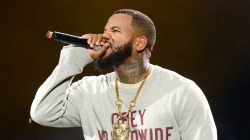
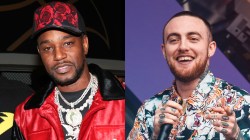
![Method Man Admits He Didn't Like Drake's "Wu-Tang Forever": "I [Wasn't] Getting On That"](https://hiphopdx.com/wp-content/uploads/2025/12/method-man-drake-wu-tang-forever-remix.jpg?w=250)
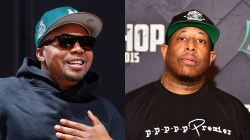

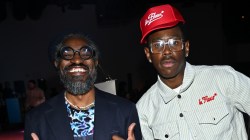

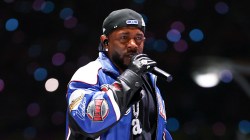
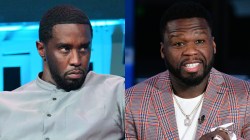
No Making Da Band? Bitch ass Diddy making those buns walk across NY for some cheesecake is the only thing I remember.
What about The Rap Game with Jermaine Dupri? That’s had 5 Seasons
And a year before pimp my ride was #ridewithfunkmasterflex that was on the defunct spike from 2003-2004 and a year after that on the defunct speed channel was #uniquewhips.
A year after that a&e did the king of cars and tlc did street customs and more.
and of course A&E did it again in 2014 with #bigsmo which lasted 2 seasons and of course fuse with #gthing with Italian new York rapper g fella a year earlier